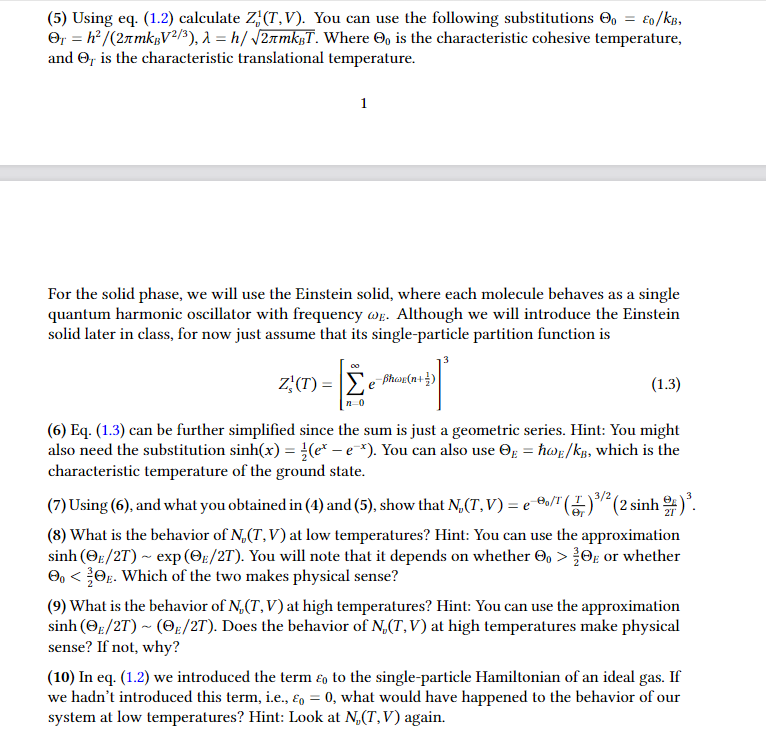Answered step by step
Verified Expert Solution
Question
1 Approved Answer
It's grand canonical time! Let's start tutorial style: Consider a closed system with volume V, in contact with a thermal bath at temperature T


It's grand canonical time! Let's start tutorial style: Consider a closed system with volume V, in contact with a thermal bath at temperature T and isolated from the exterior. Within this system you have N molecules of some substance separated in two phases, solid and vapour N = N, + N. Since the system is in thermodynamic equilibrium the corresponding chemical potentials have to be the same (T, N) = (T, , V) (1.1) For simplicity, you can assume that the volume occupied by the solid phase is negligible, V = 0 (its properties do not depend on the total volume), whereas the vapour phase occupies the whole available volume V, V. You can also assume that both phases are ideal systems and non-interacting. (1) Write down the canonical partition function of each phase Z(N,,T,V), Z(N,T) as a function of their respective single-particle partition functions Z(T,V), Z(T). Hint: for one of the phases consider the molecules to be indistinguishable. (2) Write down the grand canonical partition function of each phase Q,(T,V,H), Q,(T, ) as a function of their canonical partition functions. Hint: you can use the previous result, take the limits N, 0, N, (and assume e Z(T) < 1) to simplify the final expressions. (3) Use the grand canonical potential Q = -kgT In Q to find the chemical potential of each phase HD. Hs- (4) From the previous result, and using eq. (1.1) find an expression for the number of vapour molecules N,(T,V) in equilibrium with the solid phase. Until now we have solved the problem in its general form, without knowing much of the specifics of the single particle partition functions. Now let's assume that we can model the vapour phase as an ideal gas with the following single-particle Hamiltonian H({p,q}) = P +0 2m (1.2) where &Q is the microscopic sublimation energy (to account for the fact that there is a cohesive energy associated with the molecules). (5) Using eq. (1.2) calculate Z(T,V). You can use the following substitutions 0 = 0/KB, Or = h/(2mkV2/), = h/2mk. Where is the characteristic cohesive temperature, and Or is the characteristic translational temperature. 1 For the solid phase, we will use the Einstein solid, where each molecule behaves as a single quantum harmonic oscillator with frequency E. Although we will introduce the Einstein solid later in class, for now just assume that its single-particle partition function is 00 Z(T)(n+ n-0 (1.3) (6) Eq. (1.3) can be further simplified since the sum is just a geometric series. Hint: You might also need the substitution sinh(x) = (ex - e*). You can also use = w/kg, which is the characteristic temperature of the ground state. (7) Using (6), and what you obtained in (4) and (5), show that N,(T,V) = eo/ (+1) (2 sinh +). (8) What is the behavior of N,(T,V) at low temperatures? Hint: You can use the approximation sinh (E/2T) ~ exp (OE/2T). You will note that it depends on whether 0 > 20E or whether 00
Step by Step Solution
There are 3 Steps involved in it
Step: 1

Get Instant Access to Expert-Tailored Solutions
See step-by-step solutions with expert insights and AI powered tools for academic success
Step: 2

Step: 3

Ace Your Homework with AI
Get the answers you need in no time with our AI-driven, step-by-step assistance
Get Started


